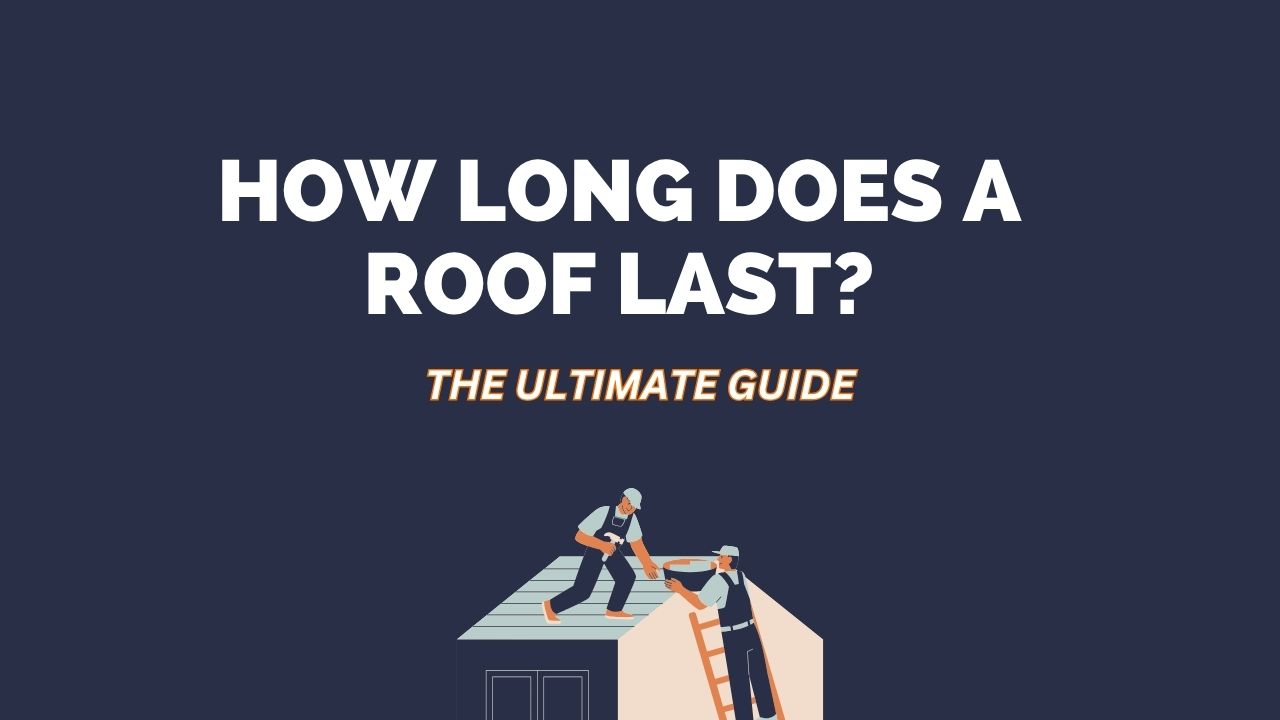How Long Does a Roof Last? A Roofing Expert’s Guide to Roof Lifespan & Care


Your roof is one of the most important parts of your home—it protects you from rain, snow, heat, and storms year after year. But just like anything else, even the strongest roof won’t last forever.
So, how long does a roof really last?
The answer depends on the material, installation quality, climate, and maintenance.
In this guide, we’ll break down the average lifespan of different roof types used in the U.S., what affects their longevity, and how you can make your roof last longer.
Average Roof Lifespan by Material
Here’s a quick overview of how long different roofing materials typically last in the U.S.:
| Roof Type | Average Lifespan | Common in | Maintenance Level |
|---|---|---|---|
| Asphalt Shingles | 20–30 years | All regions | Low |
| Architectural Asphalt Shingles | 30–40 years | All regions | Low |
| Metal Roofing | 40–70 years | Midwest, coastal areas | Low |
| Wood Shingles & Shakes | 25–40 years | Northwest, Northeast | Medium |
| Clay Tiles | 50–100 years | Southwest, Florida, California | Low |
| Concrete Tiles | 50–75 years | Warm climates | Low |
| Slate Roofing | 75–150 years | Northeast, older homes | Very Low |
| Synthetic Roofing | 30–50 years | All regions | Low |
Now, let’s look at each type in detail.
1. Asphalt Shingles (20–30 Years)
Asphalt shingles are the most popular roofing choice in the U.S.—they’re affordable, reliable, and widely available.
There are two main types:
- 3-tab shingles: Last about 20–25 years
- Architectural shingles: Thicker and more durable, lasting 30–40 years
Factors affecting lifespan:
- Poor ventilation can shorten life by trapping heat.
- Harsh weather (hail, high winds, UV exposure) can wear out shingles faster.
- Regular inspections help spot issues early.
Pro Tip: Choose architectural shingles for better durability and curb appeal—they handle U.S. weather much better.
2. Metal Roofs (40–70 Years)
Metal roofing is growing fast in popularity across America. It’s tough, long-lasting, and energy-efficient.
Depending on the material, lifespan varies:
- Steel or aluminum: 40–60 years
- Copper or zinc: 70+ years
Why they last long:
Metal roofs resist fire, mold, and insects. They also reflect sunlight, keeping your home cooler—great for southern or coastal climates.
Pro Tip: Make sure your metal roof has a proper rust-resistant coating and sealants to prevent corrosion over time.
3. Wood Shingles and Shakes (25–40 Years)
Wood shingles add a natural, rustic charm to homes—especially in forested or coastal areas. Cedar is the most common type due to its resistance to insects and decay.
However, wood roofs need more maintenance than others.
To make them last:
- Keep them clean from moss and leaves.
- Apply water-repellent and fire-retardant coatings every few years.
- Ensure good ventilation to prevent moisture buildup.
Pro Tip: In humid areas, consider treated or synthetic wood shingles—they look similar but last longer.
4. Clay and Concrete Tile Roofs (50–100 Years)
Tile roofs are built to last. You’ll see them often in the Southwest, Florida, and California, where they handle heat, salt, and sun very well.
- Clay tiles: 75–100 years
- Concrete tiles: 50–75 years
They’re heavy but extremely durable, fire-resistant, and low maintenance.
The main issue? The underlayment (the waterproof layer beneath) may need replacement every 20–25 years.
Pro Tip: Always use a reinforced roof frame—tile roofs are heavy!
5. Slate Roofs (75–150 Years)
Slate is the king of roofing materials. It’s made from natural stone and can easily last a century or more. Many historic homes in the U.S. still have their original slate roofs from the early 1900s!
Why they last so long:
- Completely fireproof
- Resistant to rot, mold, and pests
- Virtually maintenance-free
Downside:
Slate is expensive and very heavy—only suitable for strong roof structures.
Pro Tip: Always hire a roofer experienced with slate—it’s not a DIY material.
6. Synthetic (Composite) Roofing (30–50 Years)
Synthetic shingles are a modern innovation. Made from rubber, plastic, or polymer composites, they mimic the look of slate, tile, or wood—without the weight or cost.
They’re durable, impact-resistant, and ideal for variable U.S. climates.
Pro Tip: Choose a reputable brand—quality varies widely among manufacturers.
What Affects How Long a Roof Lasts
Even with the best materials, your roof’s lifespan depends on several factors:
-
Climate:
- Hot, sunny states like Arizona or Texas cause faster shingle aging.
- Cold, snowy states like Minnesota stress roofing with ice dams and thaw cycles.
-
Installation Quality:
- A professionally installed roof can last 10+ years longer than a poorly installed one.
-
Ventilation & Insulation:
- Proper attic airflow prevents moisture and heat buildup, which can damage shingles and rafters.
-
Roof Pitch (Slope):
- Steeper roofs shed water and debris better, lasting longer.
-
Maintenance:
- Cleaning gutters, replacing damaged shingles, and removing moss can extend life significantly.
How to Make Your Roof Last Longer
Here are some expert maintenance tips:
- Inspect twice a year (spring & fall).
- Clean gutters to prevent water backup.
- Trim overhanging branches to avoid falling debris.
- Check flashing around chimneys and vents for leaks.
- Schedule professional inspections every 2–3 years.
A little care goes a long way—proper maintenance can add 5–10 years to your roof’s lifespan.
When to Replace Your Roof
Watch for these warning signs that your roof may need replacement:
- Curling, cracked, or missing shingles
- Frequent leaks or water stains on ceilings
- Sagging roof deck
- Mold or moss growth
- High energy bills (poor insulation or ventilation)
If your roof is nearing its expected lifespan, it’s better to replace it before leaks cause bigger damage.
Final Thoughts
So, how long does a roof last?
In the U.S., most residential roofs last 20 to 50 years, depending on the material and climate.
- Asphalt shingles – 25 years on average
- Metal roofs – 50+ years
- Tile and slate roofs – up to 100 years
Your roof is a long-term investment. Choosing quality materials, proper installation, and regular maintenance will help your roof protect your home for decades to come.
When in doubt, always consult a licensed roofing contractor—they can assess your roof’s condition and guide you toward the best options for your area.